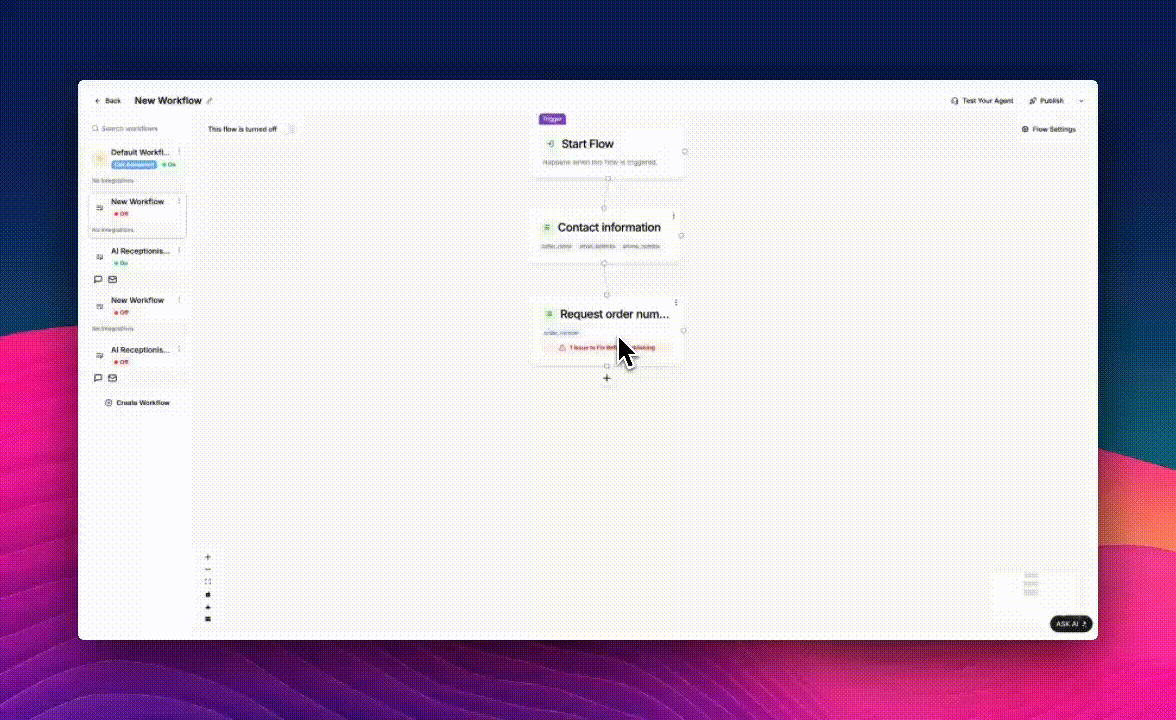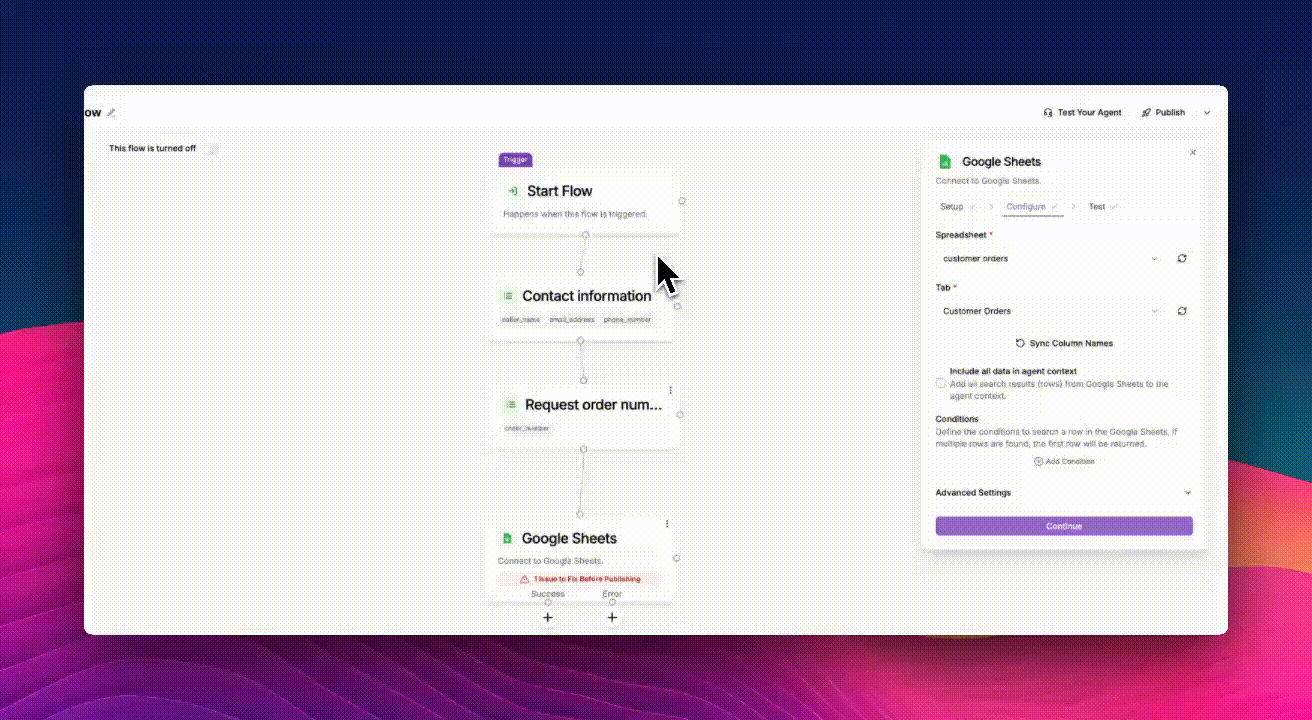- Look up order information in real time, such as status, shipping date, or product details.
- Automate responses to common order inquiries without human intervention.
- Leverage Google Sheets to store and organize data for seamless integration with Phonely.
Example Use Case
Let’s say a customer calls to check their order status. Instead of transferring them to a support agent, Phonely can automatically:- Ask for their order number.
- Search Google Sheets for that order.
- Retrieve and speak the live order status and shipping date back to the customer.
1
Start a New Flow
- From the Agent Design menu, click Create Flow.
- Add a Start Flow block to define when the flow should trigger.
- Example trigger: “When a customer asks about their order.”
- Add a Collect or Ask Exactly block to capture the order number or any variable you’ll use for lookup.
2
Add the Google Sheets Action
- Click the (+) icon below your block to add a new connection.
- Under Live Call Actions, select Google Sheets.
-
Choose the action Search a Row from the dropdown.
- This action allows Phonely to search your sheet for a value (e.g., an order number) and return matching data.
-
Click Connect to Google Sheets to begin linking your account.

3
Link Your Google Account
- A browser window will appear asking you to choose a Google account.
- Log in and grant Phonely permission to access your Sheets.
Your login credentials are never stored by Phonely.
- After authorization, the Connect to Continue button will activate.
- Click it to proceed.
4
Configure the Search
- Select Spreadsheet and Tab - Choose the Google Sheet you want to connect under Spreadsheet, then select the specific Tab (worksheet) that contains your data.
- Sync Columns - Click Sync Column Names to automatically fetch all column headers from your sheet for use in conditions or variable mapping.
- Include All Data (Optional) - You can enable Include all data in agent context if you want Phonely to load all search results into the AI’s context for later use in conversation.
- Define Search Conditions - Under Conditions, specify how Phonely should search for the data:
- Click Add Condition
- Select a field (e.g.,
order_number) - Choose a comparison type (e.g., is equal to)
- Enter the matching variable or value (e.g., the caller’s provided order number)
If multiple rows match, Phonely will return the first row by default.

- Advanced Settings (Optional) — Enable Interim Message to let the caller know the agent is processing their request (e.g., “Please hold while I look that up”).
- Continue — Once everything is configured, click Continue to move to the Test step.
- Test the Connection — Click Test to confirm that Phonely can successfully find a row in your selected sheet.
- If successful, you’ll see a “Match found” message showing the returned data.
- You can also choose Skip Test if you’re confident in your setup.

5
Test and Publish
- Click Test Your Agent to simulate a call and verify that the correct data is fetched.
- If everything works, click Publish to make the workflow live.
- Any time a customer calls about their order, Phonely will automatically look up the latest data in Google Sheets.
6
Handle Success and Error Paths
Once the search action runs, Phonely creates two possible branches:
- Success — the data was found in Google Sheets.
- Error — no match was found or the sheet could not be accessed.
- Speak or message the result.
- Apologize or ask for a new input if no match is found.
- On Success → Say Exactly:
“Your order status isorder_statusand your expected delivery date isship_date.” - On Error → Say Exactly:
“I couldn’t find that order number. Could you repeat it once more?”
Common Use Cases
| Scenario | Example |
|---|---|
| Order tracking | Retrieve order status, ship date, and tracking link |
| Appointment lookup | Find next available appointment or meeting details |
| Support info | Pull troubleshooting steps or policy details from a shared sheet |
| CRM sync | Search or log caller details during inbound calls |

